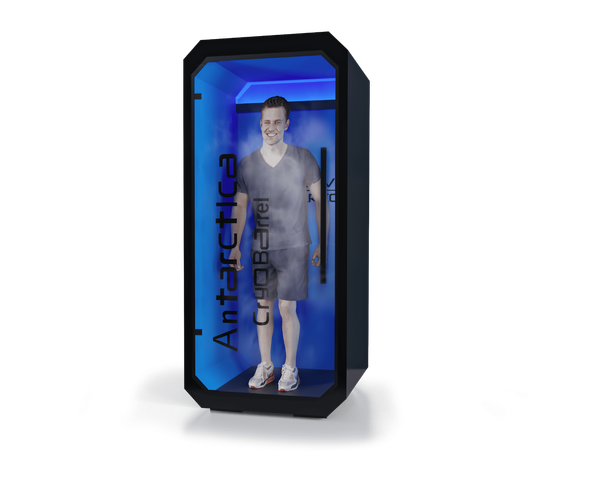The Stagnation of Open-Source Medical Solutions: A Call for Innovation and Community Support
Table of Content
For years, the field of open-source medical software has seen limited innovation, with many projects becoming stagnant or receiving only minimal updates. Despite the increasing demand from users and countries, especially in low-resource environments and developing countries, to leverage open-source solutions, there has been a noticeable gap in the development of new tools for clinic management, hospital management, radiology, digital pathology, lab management, and medical process workflow management.
Over the past few years, we have been diligently collecting and evaluating open-source medical projects suitable for use in hospitals, clinics, labs, and other healthcare settings.
Unfortunately, only a few new projects have emerged, and many of these have either received limited support or have been abandoned over time. Below is a quick list of some of our most recent and updated collections.
- Portable DICOM Viewers
- EMR, EHR, and Clinical practice solutions
- 25 DICOM Viewers for Windows
- DICOM Viewers for doctors: Windows, Linux and macOS
- 2 Free DICOM Viewers and PACS Workstations for macOS
- Free Whole-Slide Image Viewers and Analysis Programs; Redefining Digital Pathology
- 20 Open-source Laboratory Information Management Systems (LIMS)
However, In this article, we’ll explore the current state of open-source medical software, the benefits of using HIPAA-compliant, free, and open-source software (FOSS) medical apps, the challenges faced by communities, and how to resolve these issues.
We’ll also suggest 10 open-source project ideas for university students to help fill this critical gap.
The Benefits of Open-Source Medical Software
- Cost-Effectiveness: Open-source solutions are particularly beneficial in low-resource environments and developing countries, as they drastically reduce the financial burden on healthcare facilities. Free DICOM apps, for instance, are invaluable for radiology departments that need to manage medical imaging without incurring high software costs.
- Customizability: FOSS medical apps can be tailored to meet specific healthcare needs, allowing for better alignment with the diverse and complex requirements of medical institutions across different regions.
- Transparency and Security: Open-source medical apps offer transparency, enabling healthcare providers to audit the code and ensure that it complies with regulations such as HIPAA. HIPAA compliance is critical for protecting patient data, and open-source solutions can provide the necessary tools for maintaining these standards.
- Community-Driven Innovation: The open-source model fosters a community-driven approach to development, where healthcare professionals and developers collaborate to innovate and improve existing software solutions.
- Interoperability: Open-source software is often designed with interoperability in mind, allowing it to integrate seamlessly with other systems. This is particularly important for building cohesive healthcare infrastructures in developing countries and low-resource settings.
Challenges in the Open-Source Medical Ecosystem
1- Regulatory Compliance:
Ensuring that open-source medical apps are HIPAA compliant is a significant challenge, particularly for projects with limited resources. Compliance with regulations like HIPAA is non-negotiable in healthcare, but it requires expertise and resources that are often scarce in the open-source community.
2- Sustainability:
Many open-source medical projects struggle with sustainability due to a lack of consistent funding and support. This leads to burnout among developers and the eventual abandonment of projects that had potential.
3- Community Engagement:
The success of FOSS medical apps heavily depends on an active and engaged community. However, without proper community management and continuous contributions, many projects fail to maintain momentum.
4- Technical Debt:
Older projects often suffer from outdated technologies, poor documentation, and lack of modern features. This technical debt makes it difficult to attract new users or contributors, ultimately leading to the project’s decline.
5- Security Concerns:
In the healthcare sector, ensuring robust security measures is crucial. Open-source projects need to prioritize security to protect sensitive patient data, but this requires ongoing attention and resources.
How to Address These Issues
Increase Funding and Support:
To ensure the sustainability of open-source medical apps, there must be increased investment from governments, NGOs, and private sector companies. This funding can support the development of HIPAA-compliant software and help maintain existing projects.
Engage University Students:
Universities can play a vital role in revitalizing the open-source medical software landscape. Encouraging students to contribute to or start new projects as part of their coursework or research can inject fresh ideas and energy into the ecosystem.
Strengthen Community Building:
Building a strong community around open-source medical projects is essential. This involves not only attracting contributors but also fostering collaboration among healthcare professionals, developers, and users to drive continuous improvement.
Modernize Legacy Projects:
Existing open-source medical projects should be modernized to meet current standards. This includes updating the codebase, improving documentation, and integrating modern features that align with today’s healthcare needs.
Focus on Compliance from the Start:
Ensuring that projects meet regulatory requirements like HIPAA from the outset can prevent compliance issues down the line. Collaborating with legal experts or regulatory bodies can help guide this process.
Top 10 Open-source Medical and Healthcare
- OpenEMR
- HospitalRun
- DICOM Reader
- Horos DICOM Viewer
- Miele-LXIV
- AMIDE
- Orthanc DICOM PACS Server
- Dicoogle PACS Server
- BlueLight DICOM Viewer
- OpenHospital
10 Project Ideas for University Students
- Next-Gen Clinic Management System: A modular, scalable, and cloud-ready clinic management system that integrates telemedicine capabilities and ensures HIPAA compliance.
- Radiology PACS Lite: Develop a lightweight, free DICOM app that serves as a Picture Archiving and Communication System (PACS) tailored for radiology departments in low-resource environments.
- Digital Pathology Platform: Create an open-source platform for managing and analyzing digital pathology slides with AI-driven diagnostic tools, aimed at resource-constrained settings.
- LabTestTracker: An open-source lab management system that handles test results, lab inventory, and integrates seamlessly with hospital management systems.
- Patient Workflow Optimizer: Design a system to optimize patient flow in hospitals, reducing wait times and improving overall patient experience.
- LIMS: Develop a Laboratory Information Management System (LIMS) for medical research labs with features for sample tracking, data analysis, and compliance reporting.
- Telehealth Suite: Build a comprehensive telemedicine platform that includes video consultation, remote patient monitoring, and electronic prescribing, all compliant with HIPAA standards.
- OpenMRS NextGen: Modernize the OpenMRS platform with mobile compatibility, offline functionality, and a modern user interface to better serve developing countries.
- Hospital Resource Manager: Create a tool for managing hospital resources such as beds, staff schedules, and equipment, using real-time data and predictive analytics.
- Community Health Worker App: Develop a mobile app for community health workers to collect data, track patient visits, and provide educational resources in remote areas, focusing on interoperability with existing healthcare systems.
Conclusion
The stagnation of open-source medical solutions presents both a challenge and an opportunity. By addressing the issues of funding, community engagement, and regulatory compliance, we can breathe new life into this crucial sector.
Universities, in particular, have the potential to drive innovation by encouraging students to tackle these challenges through open-source projects. The suggested project ideas are a starting point, offering a roadmap for the next generation of developers to contribute to the future of healthcare in a meaningful way.










